By Darcy Farrell
It’s easy to see how Doug Burton was chosen to be a wartime flight instructor.
You often hear the statement ‘he’s a born leader’.
That term is sometimes used loosely. But Doug was a born leader – akin to General Peter Cosgrove.
In leadership qualities Doug Burton reminds me of General Cosgrove, Weary Dunlop and Angus Houston.
| Sir Peter Cosgrove |
| His Excellency General the Honourable Sir Peter Cosgrove AK MC (Retd) graduated from the Royal Military College Duntroon in 1968 and rose to become the Chief of Australia’s Defence Force. The role in 1999 which gave him public prominence was commander of InterFET (International Forces East Timor), where he was responsible for overseeing East Timor’s transition to independence. For his leadership in this role he was promoted to Companion in the Military Division of the Order of Australia (AC). He was named Australian of the Year in 2001. He was sworn in as Governor-General in 2014. | 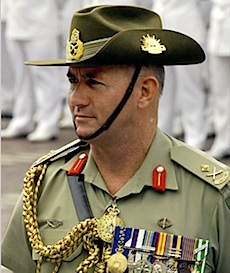 |
|
| Weary Dunlop |
| Colonel Sir Ernest Edward “Weary” Dunlop, AC, CMG, OBE (1907-1993) was an Australian surgeon who was renowned for his leadership while being held prisoner by the Japanese during World War II. A courageous leader and compassionate doctor, he restored morale in the terrible prison camps and jungle hospitals. Dunlop defied his captors, gave hope to the sick and eased the anguish of the dying. His example was one of the reasons why Australian survival rates were the highest. | 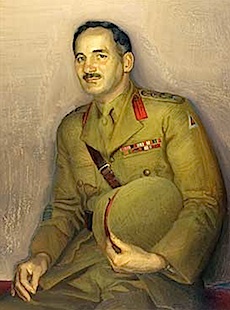 |
|
| Angus Houston |
| Air Chief Marshal Allan Grant “Angus” Houston AC, AFC is a retired senior officer of the Royal Australian Air Force. He served as Chief of Air Force (CAF) then as the Chief of the Defence Force (CDF) until his retirement in 2005. Houston has since been appointed to a number of positions, including chairman of Airservices Australia. In March 2014 he was appointed to head the Joint Agency Coordination Centre (JACC) during the search for Malaysia Airlines Flight 370. Following the Malaysia Airlines Flight 17 disaster when the aircraft crashed on 17 July 2014, presumed to have been shot down, killing all 283 passengers and 15 crew on board, Houston was appointed the Prime Minister’s Special Envoy to Ukraine, with the objective to “lead Australia’s efforts on the ground in Ukraine to help recover, identify and repatriate Australians killed in the MH17 crash”. | 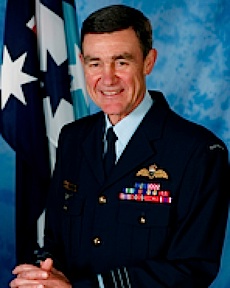 |
|
I was a newcomer at Newspaper House in 1953 and although I saw Doug around the building I didn’t get to know him well.
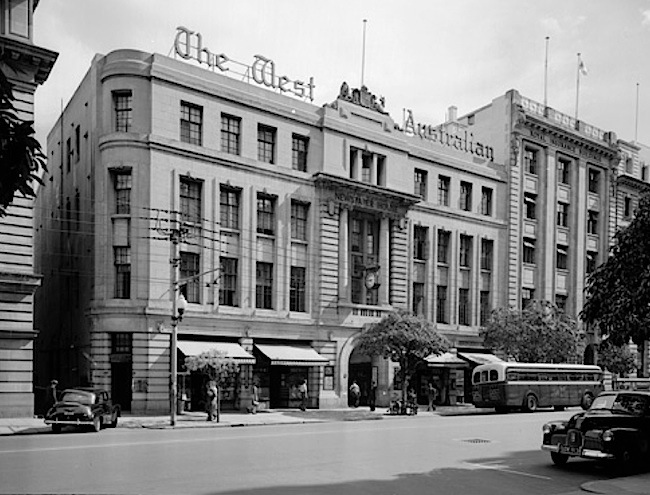
Courtesy of The State Library of WA ©
That is, until I was in Carnarvon with a West photographer and I think we were covering the round-Australia car rally.
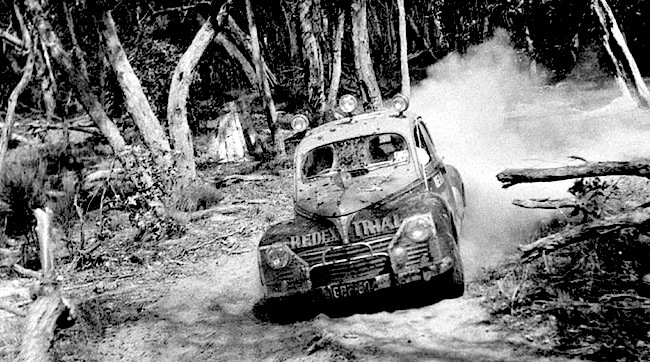
Doug was there as the leader of the photographic team and we were all staying at the Gascoyne Hotel owned by the colourful Cornish family.
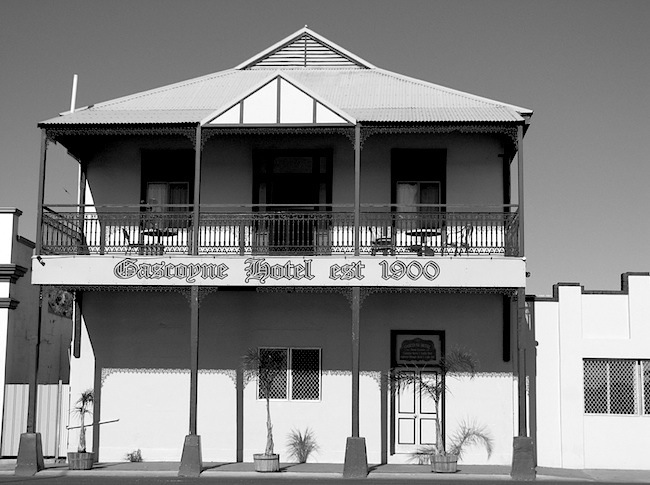
I think Phil Martin may have been with him. Harold Rudinger was also there.
Doug was the leader but he didn’t have to demonstrate his authority. He just exuded the charisma of the leader.
Leaders are people you want to follow.
They have a warmth and strength about them.
Listen to Cosgrove and shut your eyes and you could be listening to Doug Burton.
There is the same humility, unassuming confidence and honesty.
What Doug said made sense. He was decisive. When Doug wanted your attention he did not have to say a word. You wanted to hear him.
Doug was a leader and you did not want to let him down.
He gave you his trust and you didn’t want to displease him.
He was not just a leading newsman and superior photographer. He knew how to handle people and, with all his wartime experience and exploits as a newspaperman, it was probably his humanitarianism, compassion, friendship and humour which will live in the minds of many who knew him.
It is often said that ‘the closer you get to a great man, the more you realise he is just a man’.
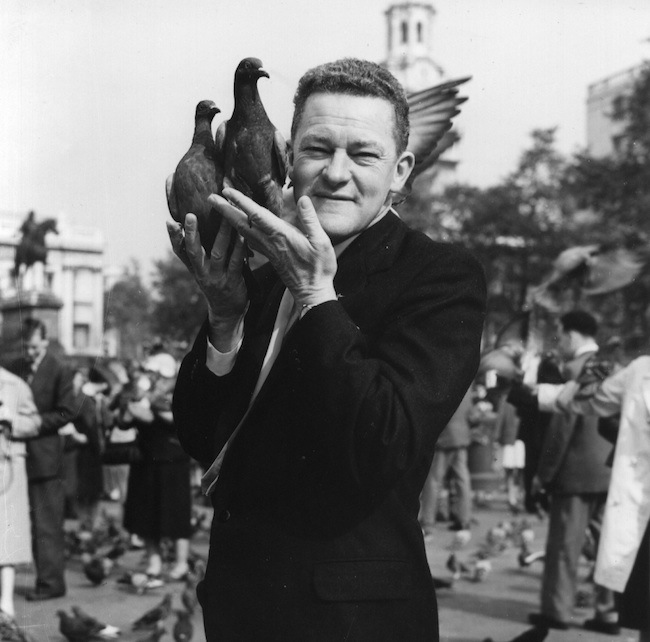
The more you saw of Doug the more you realised that he was a great man.
• D.Farrell, April 24, 2014
For most of the years in which television has existed in WA, there has been a connection between the West Australian newspaper and Seven Perth, for it was the managing editor of WA Newspapers (WAN) James Macartney who instructed one of his executives, Jim Cruthers (now Sir James), to apply for Perth’s first television licence. Newspaper staff became founding members of TVW Channel 7’s staff, of which Darcy Farrell was the first news editor. Darcy is thus able to detail the many connections between these two WA media organisations. It was Jim Cruthers and Darcy who engaged many WAN journalists in the news reporting, promotions and presenting roles. People the calibre of Syd Donovan, Dan O’Sullivan and Athol Thomas made appearances or joined the staff, with many more journalists to follow in the rank and file over the years, working in the newsroom, or on interview programs and sporting panels.
John Cruthers has kindly pointed out that his father Sir James had a huge amount of time for DJB, as he called him. They started in newspapers roughly together and remained strong friends their entire lives. “Dad was very sad to hear of his passing.”
Sir James pointed out in his oral history, that Doug Burton as the head photographer, was a very fine person who got on well with everyone. He went on to say that, “In 1947, (the WAN managing editor James) Macartney bought a car for the head cameraman, Mr Doug Burton, or at least subsidised the car. I think Burton got a shilling a mile or some such. It was the only vehicle we had, and in those days a reporter would be given a story by the chief of staff. He would go downstairs to the camera area, see the head cameraman, Doug Burton, and say, ‘I’ve got to do this story and they want a picture,’ and Burton would allocate one of his cameramen to go, and off they’d go and get a tram and go wherever they were going. Now when Burton got his car, of course, he became the most popular person ever among journalists, because all of us… we did our absolute utmost if we had to get a picture to see whether we could go with Burton, because we’d go in his car.”
Darcy Farrell has provided some enlightenment regarding their early careers when they covering the first British atom bomb test in 1952. Sir James was then a young journalist whilst Doug was the photographer responsible for capturing the first image of this massive explosion on Australian territory.
Here Darcy has kindly provided background on the WAN team that covered that historic event…
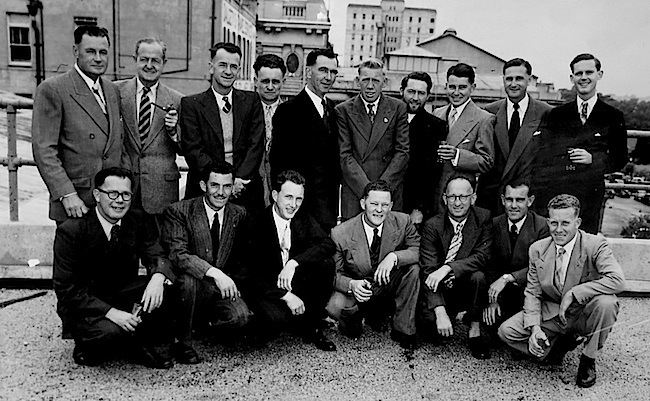
Back: J L (Jack) Nicol; Jimmy Woods; E (Ted) Rodgers; R (Buck) Buchanan; R (Dick) Long; A F (Alec) Laughton; R (Bob) Warren; James Cruthers, Sir; N F (Norm) Milne; Peter Barnett;
Front: W J (Bill) Mangini; R O (Owen) Williams; P H (Phil) Martin; D J (Doug) Burton; H (Harold) Rudinger; Jack Coulter; Dan O’Sullivan
Courtesy of The West Australian ©
In the back row, from left, Jack Nicol, a decorated ex-Navy officer, who was one of J E Macartney’s executives; Captain Jimmy Woods (1893-1975), owner of Woods Airways and a genuine pioneer of Australian aviation (he flew with and worked for Norman Brearley). Next two are Ted Rodgers and Buck Buchanan. In the dark suit, is photographer Dick Long, then the driver wearing the RSL badge is Alec Laughton, the bearded man is Bob Warren, then (Sir) James Cruthers, Norm Milne who became the first PR person working in the Australian oil industry and Peter Barnett, a West journo, whose brother was either the first or second Director of ASIO.
Front row, from left: Bill Mangini a scientist; Owen Williams, another former wartime photographer, who died in the crash with Dig Milner at Cervantes; Phil Martin DFC and Bar, 617 Squadron. Phil raided the dams and may have sunk the German battleship Tirpirtz (see the book The Dam Busters by Paul Brickhill); Douglas Joseph Burton, wartime instructor of thousands of young pilots, head photographer at The West and subsequently in the film and photographic section at TVW; Harold Rudinger, engineer and boffin who helped assemble the special lens and other equipment to photograph the bomb ‘going off’; Jack Coulter (1915-2008), double Walkley winner for his work as Australia’s best police roundsman; and Dan O’Sullivan (1926-2006), superb feature writer who was to become Editor-in-chief of West Australian Newspapers. Jack Coulter told me that when the bomb went off it was O’Sullivan who made a name for himself by grabbing the only phone linked to the rest of Australia and gave a running commentary of the explosion and its aftermath.
Dan O’Sullivan later became the editor-in-chief of West Australian Newspapers, a company that assisted with the start of The Jakarta Post in 1983. He helped set up the Sister-State Agreement in 1990.
Paul Rigby prepared the following cartoon to commemorate the WAN men who took part in the first Monte Bello expedition. It was only for the amusement of staff and not for publication, hence the depiction of them being somewhat sex starved for the duration.
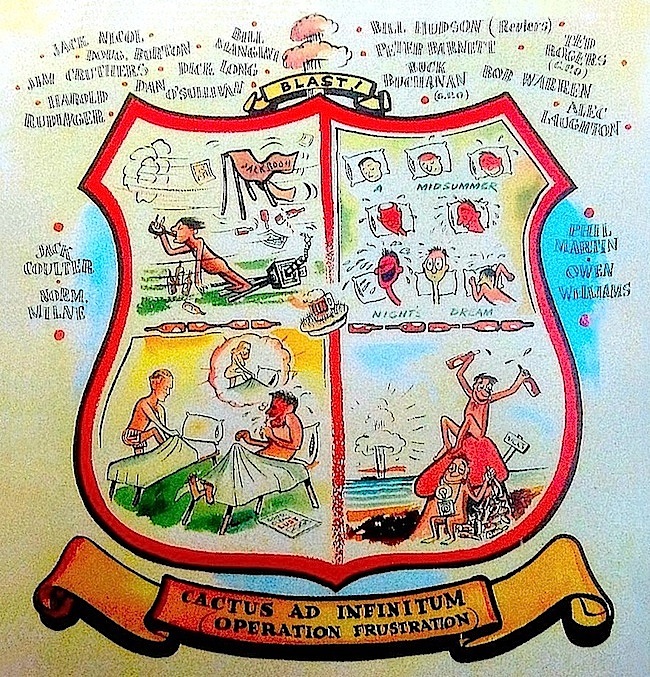
TVW Channel 7 photographic staff also had a link to WA Newspapers and Doug Burton.
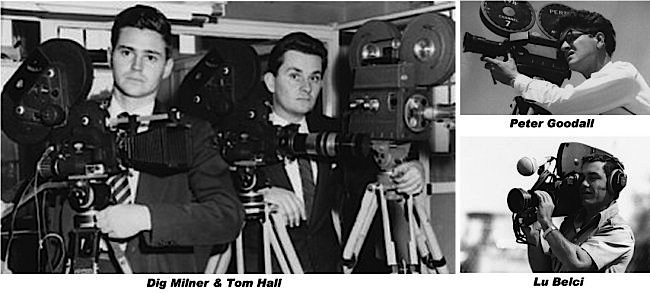
The early Seven cine-cameramen Digby Milner, Tom Hall, Peter Goodall and Lu Belci were all drawn from Doug’s staff at the West. Sadly, Dig Milner and the West’s Owen Williams lost their lives in an air crash on Monday 28th November 1960, when their chartered aircraft crashed into the sea near Cervantes Island whilst photographing a stranded freezer-boat, which was holed and resting on a reef. Prior to that, Dig Milner and Doug Burton covered the Rome Olympics from August 25 to September 11, 1960.
News Coverage Events of 1960
WA TV History
Newspaper and Television News not only covers the dramatic elements of real life, as a window on the world, but sometimes the disasters and tragedy can occur within the News gathering team, to inadvertently become part of the News story.
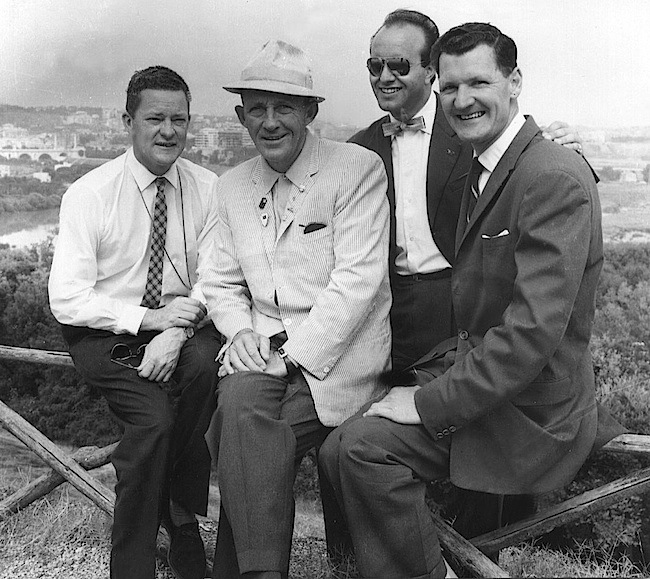
at the Rome Olympics in 1960 (Photo by Digby Milner)
Though development began in the mid 1970s, it was not until the 1990s that digital cameras became commercially available. These revolutionised photography, as film cameras were the technology up until then.
Prior to that, photographs were made by exposing a light sensitive film, and then using chemicals to develop and stabilize the image. By contrast, digital photographs can be displayed, printed, edited, transmitted and stored using the new techniques.
When Doug Burton retired from WA Newspapers in 1978, he took up an administrative consulting role at TVW Channel 7. Five years earlier, TVW had acquired a controlling interest in Group Color, to provide a colour film and slide processing service for colour television and to develop the NECO (Nippon Enlarging Colour Inc) colour enlarging operation in Perth. Group Color soon became a wholly-owned subsidiary of TVW Limited and its founder, Ray Irvine, left eventually taking the NECO business with him. The company was relocated to TVW and Doug Burton became the manager. Another branch of Group Color was located in Adelaide. Eventually, Doug retired leaving Richard Ashton to manage the business. On 8th November 1980, Robert Holmes à Court launched the Western Mail, a Saturday newspaper, to challenge the Herald & Weekly Times (H&WT) which had bought the West Australian in 1969 (not to be confused with the WAN’s Western Mail which was renamed The Countryman in 1955). When Holmes à Court gained control of TVW, he moved Group Color into Perth to service the colour photography needs of the Western Mail, but when he gained control of the West Australian, he disbanded Group Color. Holmes à Court’s Western Mail made estimated losses over seven years of $50 million.
The fortunes of both TVW and the West were to take many twists and turns over the ensuing years till they were united in 2011 as Seven West Media Limited.
This journey entailed an all important emphasis on catering for the community under James Macartney and Sir James Cruthers, which led to acquisitions and diversification, company growth, record dividends followed by corporate raids, eventual bankruptcy and marvellous recovery as ownership changed several times. It should be emphasised that the television and newspaper divisions did not fail, it was the dubious corporate manipulations and a crash in the economy which led to the downfall of the owning identities of Robert Holmes à Court’s Bell Group, Alan Bon’s Bond Corporation and Christopher Skase’s Qintex, which in turn impacted on the otherwise profitable companies.
The Herald and Weekly Times Limited bought The West Australian in 1969, but the newspaper was sold to Robert Holmes à Court in 1987, as part of the News Limited takeover of H&WT. In 1971, TVW Enterprises purchased the Adelaide station SAS10, now SAS7. In 1973, City Theatres was taken over by a consortium consisting of local television companies TVW, STW and Michael Edgley, until 1978 when TVW bought out the other partners.
In 1979, decisions by the Federal Government to relax Electronic Media ownership rules led to a flurry in takeover activity in the ownership of Australian Television Stations. In 1982, TVW (and SAS) were no longer a public company after purchased by Perth based businessman Robert Holmes à Court’s Bell Group. In 1983, Bond Corporation bought control of STW9, then purchased TCN9 Sydney and GTV9 Melbourne from Kerry Packer. In 1987, The West Australian was sold to Robert Holmes à Court’s Bell Group when the remainder of H&WT was bought by Rupert Murdoch’s News Corporation.
In October 1987, the stock market crashed. The financial pressure placed on the Bell group as a result led to a takeover of Bell by Bond Corporation Holdings Ltd. The takeover was completed around the end of 1988. In 1988, Christopher Skase and his Qintex group bought TVW7 (Perth) and SAS (Adelaide). Then Qintex collapsed in 1989, after an unsuccessful takeover of the Hollywood film studio MGM/UA, leaving TVW and the other Qintex interests in the hands of receivers. In 1989, Bond Corporation announced a $980 million loss and went into receivership. Eva Presser’s Sunraysia Television bought STW9 from the receivers of Bond Media for $95 million. Robert Holmes à Court succumbed to a heart attack in 1990 and died intestate. The same year, Kerry Packer regained control of TCN9 Sydney and GTV9 Melbourne for around $250 million after selling it to Bond for $1 billion.
In 1991, Qintex’s television interests, including TVW and SAS, were consolidated within a separate company, and floated on the stock exchange as the Seven Network. Then in 1992, following the collapse of Bond Corporation, a newly formed company, West Australian Newspapers Holdings, purchased the paper from the receivers. Then in 1995, Kerry Stokes acquired a dominant stake in Seven.
On 4th April 2007, Australia’s new media-ownership laws took effect with the repeal of cross-media and foreign control rules. The companies are now allowed to own up to two media outlets – television, radio and newspaper – in a single area. Mergers are allowed if the transaction passes a media diversity test that ensures there are five remaining independent media groups in metropolitan markets and four in regional markets. Under the amended laws, media mergers are subject to the approval of the Australian Competition and Consumer Commission (ACCC). On 3rd December 2008, Kerry Stokes gained control of WA Newspapers and becomes chairman. In 2011, West Australian Newspapers Holdings Ltd bought chairman Kerry Stokes’ television and magazine interests, with the company renamed Seven West Media Limited. This reunited Channel Seven Perth with the company which founded the station in 1959. Seven Perth will soon be joining the West at Osborne Park in early 2015.
It was at the photographic studios at The West’s new Osborne Park site where Doug recorded this video tribute to the golden era of photography at WA Newspapers, when they obtained a world scoop covering the first British atom bomb test in 1952.
Doug Burton (1918-2013) 1952 UK Monte Bello Atom Bomb test
WA TV History
Prior to his death in 2013, Doug Burton recorded this tribute to the golden era of photography at WA Newspapers.
Courtesy of the West Australian
BURTON (Douglas Joseph) MBE:
Passed away peacefully on 25 July 2013, in his 95th year.
Beloved husband of Toni (dec).
Devoted father of Carole, Janice, Judith and Kim.
Father-in-law of John, Kevin, Kingsley and John.
Grandfather “Dougie” of Roger, Fiona, Susannah, Elizabeth, Claire, Andrew, Paul and David.
Great grandfather “Dougie” of Thomas, Samantha and Benjamin.
Strong, Thoughtful Kind and true.







